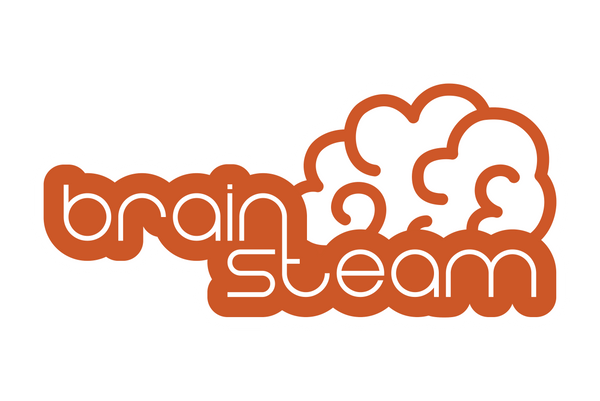Table of Contents
- Introduction
- The Importance of Robotics in Elementary Education
- Integrating Robotics into the Curriculum
- Choosing the Right Robotics Kit
- Benefits of Robotics for Kids
- Enhancing Problem-Solving Skills
- Fostering Creativity and Innovation
- Building Collaboration and Teamwork
- Teaching Coding and Programming
- Safety Considerations
- Best Practices in Teaching Robotics
- Hands-On Learning and Exploration
- Encouraging Critical Thinking
- Adapting to Individual Learning Styles
- Robotics for Kids: Trends and Best Practices in Elementary Education
Introduction
In recent years, the field of education has undergone a remarkable transformation, with one of the most exciting developments being the integration of robotics into elementary education. This shift has not only made learning more engaging and interactive but has also equipped young learners with essential skills for the future. This article explores the trends and best practices in elementary education with a focus on robotics for kids.
The Importance of Robotics in Elementary Education
Elementary education is a crucial phase in a child's life as it lays the foundation for their academic journey. Robotics serves as a valuable tool to make learning fun and impactful. It sparks curiosity, fosters a love for STEM (Science, Technology, Engineering, and Mathematics), and prepares kids for the digital age.
Integrating Robotics into the Curriculum
To effectively integrate robotics into elementary education, educators should incorporate it into the curriculum. Robotics can be introduced as a part of science, technology, or even as an interdisciplinary subject. This ensures that students receive a well-rounded education that includes problem-solving, creativity, and teamwork.
Choosing the Right Robotics Kit
Selecting the appropriate robotics kit is essential. It should be age-appropriate, user-friendly, and offer a balance between challenge and fun. Some popular choices include LEGO Mindstorms, Dash and Dot, and Ozobot. The right kit can make the learning experience enjoyable and educational.
Benefits of Robotics for Kids
Enhancing Problem-Solving Skills
One of the primary benefits of introducing robotics to kids is the enhancement of their problem-solving skills. They learn to analyze problems, identify solutions, and execute them effectively. This skill is invaluable both in education and real-life situations.
Fostering Creativity and Innovation
Robotics encourages creativity and innovation. Kids can design, build, and program robots, allowing them to express their ideas and bring them to life. This nurtures an innovative mindset from a young age.
Building Collaboration and Teamwork
Robotics projects often involve group work. Kids learn to collaborate, communicate, and work as a team to accomplish tasks. This fosters social skills and teaches them how to work with others effectively.
Teaching Coding and Programming
Coding and programming are essential skills in the digital age. Robotics kits often involve basic coding, introducing kids to the world of programming in a fun and interactive way.
Safety Considerations
While robotics in education is exciting, safety should always be a priority. Educators must ensure that students are aware of safety rules and guidelines. This includes understanding the safe use of robotics components and tools.
Best Practices in Teaching Robotics
To ensure the best learning experience, educators should follow certain practices:
Hands-On Learning and Exploration
Encourage hands-on learning where kids can explore and experiment with robotics kits. Learning by doing is the most effective way to grasp concepts.
Encouraging Critical Thinking
Pose challenges that require critical thinking. Encourage students to think logically, analyze problems, and find innovative solutions.
Adapting to Individual Learning Styles
Every child is unique, and their learning styles may differ. Adapt your teaching methods to cater to these differences, ensuring that each child benefits from the experience.
Robotics for Kids: Trends and Best Practices in Elementary Education (Combined Articles)
In recent years, the integration of robotics into elementary education has gained immense popularity, transforming the way children learn and engage with STEM (Science, Technology, Engineering, and Mathematics) subjects. The use of robots in the classroom not only makes learning more interactive and fun but also equips students with essential skills for the future.
Trends in Robotics for Kids
- Coding Integration: Coding is an essential skill for the future, and many robotics programs now incorporate coding to teach students how to program robots.
- Accessible Hardware: The hardware used in educational robotics is becoming more affordable and user-friendly.
- Online Learning: The COVID-19 pandemic accelerated the adoption of online learning.
- Interdisciplinary Approach: Modern robotics programs encourage the blending of STEM with other subjects, such as art and language, to create a holistic learning experience.
- Diversity and Inclusion: There's a growing emphasis on promoting diversity and inclusion in STEM fields.
Best Practices in Elementary Robotics Education
- Start Early: Introduce robotics at a young age to pique students' interest and establish a strong foundation for future learning.
- Hands-On Learning: Make robotics an interactive experience.
- Collaborative Learning: Foster teamwork and collaboration among students.
- Incorporate STEAM: Combine robotics with art and creativity by integrating STEAM concepts.
- Professional Development: Provide teachers with adequate training and resources to effectively integrate robotics into the curriculum.
- Assessment and Feedback: Regularly assess students' progress and provide constructive feedback to help them improve their robotics skills.
- Community Involvement: Connect with local robotics clubs, organizations, and professionals to provide students with opportunities to explore robotics outside the classroom.
Real-World Success Stories
Several schools and organizations have achieved remarkable success with robotics in elementary education.
- FIRST LEGO League: This global program engages students in hands-on robotics challenges.
- RoboCup Junior: A robotics competition that encourages creativity and problem-solving skills.
- CoderZ: An online platform that offers virtual coding and robotics competitions.
Conclusion
Robotics for kids in elementary education is a promising trend that not only prepares young learners for the future but also makes learning an enjoyable adventure. By integrating robotics into the curriculum, choosing the right kits, and following best practices, educators can ensure that children develop essential skills while having fun along the way. The future of elementary education is bright with the exciting possibilities of robotics.
Sources:
- "The Benefits of Robotics for Kids in Education"
- "Integrating Robotics into Elementary Curriculum"
- "Choosing the Right Robotics Kit for Your Classroom"
- "Teaching Kids Coding and Programming with Robotics"
- "Safety Guidelines for Robotics Education in Elementary Schools"
FAQs:
- Q: Are robotics kits suitable for all age groups in elementary education? A: Robotics kits can be adapted to different age groups, ensuring age-appropriate learning experiences.
- Q: What are the career prospects for students who excel in robotics education? A: Students with a strong foundation in robotics can pursue careers in engineering, programming, and technology-related fields.
- Q: How can parents support their children's interest in robotics? A: Parents can encourage their children's interest by providing access to robotics kits, enrolling them in robotics clubs, and offering educational resources.
- Q: Is robotics education only beneficial for students interested in STEM fields? A: No, robotics education enhances problem-solving, creativity, and teamwork skills that are valuable in any field.
- Q: What are some resources for educators to learn more about teaching robotics effectively? A: Educators can find resources and professional development opportunities through educational organizations and online platforms dedicated to robotics in education.

